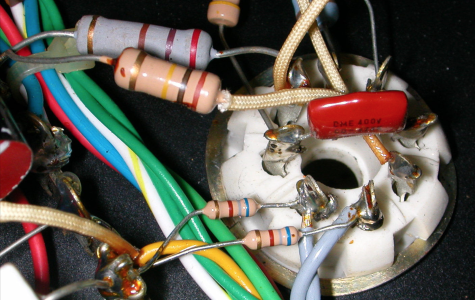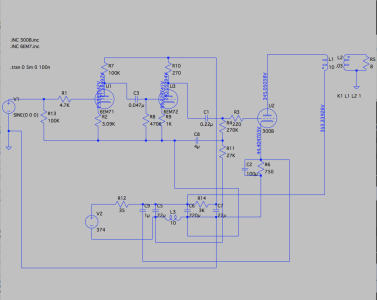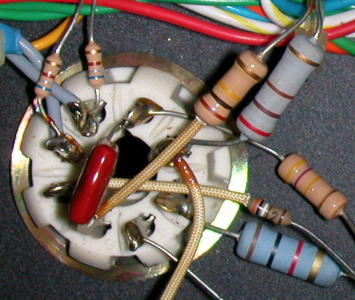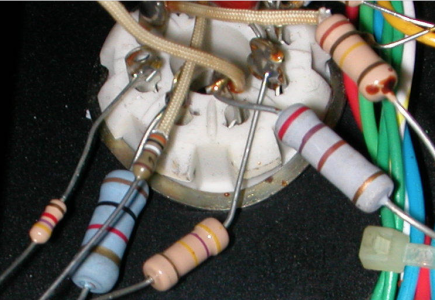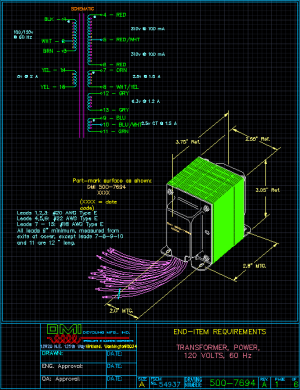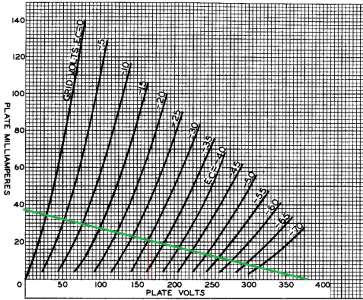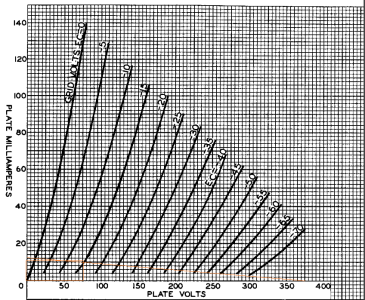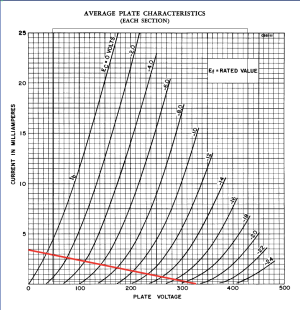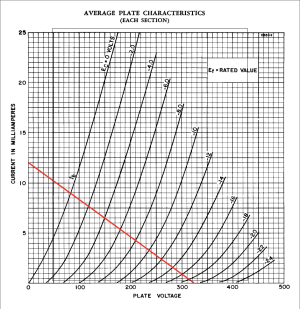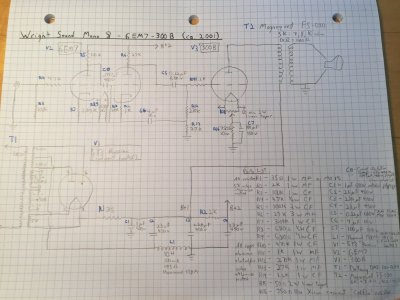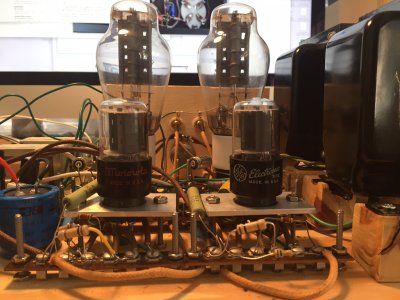Caucasian Blackplate said:That's also not particularly plausible. (Run it through spice or draw a 270 Ohm load line on the datasheet)
I would say that there's a white or silver band between red and violet that just isn't super visible. That would give an operating point of about 20V of bias and 20mA into a ~3K load assuming there's about 400V of B+ available. It still seems a little off, but it will pass signal (the lower values of plate load will choke the available signal voltage at the grid of the 300B).
So, I read what you said and thought about it for awhile, and earlier this evening received pics from inside the other amp. The rake lighting in the attached image shows that there is no other stripe on that resistor -- it really is 270 ohm (unless the brown multiplier stripe is a discolored red or orange, but I don't think so).
I also learned that the power transformer was manufactured by DeYoung and is labeled with the number DMI 500-7694 0050, which Google shows me was also used on the WPA 3.5. I've written to DeYoung to ask for the specs, but it's possible that the Mono 8 ran at or near 2A3 voltages. Maybe he had one PT made for multiple models, and there was a higher voltage tap available for the Mono 8, but we'll see.
I tried the 250Vak and 300Vak 300B operating points in LTSpice just to see what the 6DN7 looked like.
250V (63mA)
B+ -- 306V
Plate/Cathode 1 -- 117V/4.4V (1.4mA)
Plate/Cathode 2 -- 257V/13.5V (13.5mA)
300Vak (77mA)
B+ -- 367V
6DN7 Plate/Cathode 1 -- 140V/5.3V (1.7mA)
6DN7 Plate/Cathode 2 -- 309V/16.3V (16.3mA)
In either case it can take about a 2V signal before clipping, so, feasible for use with a line preamp.

